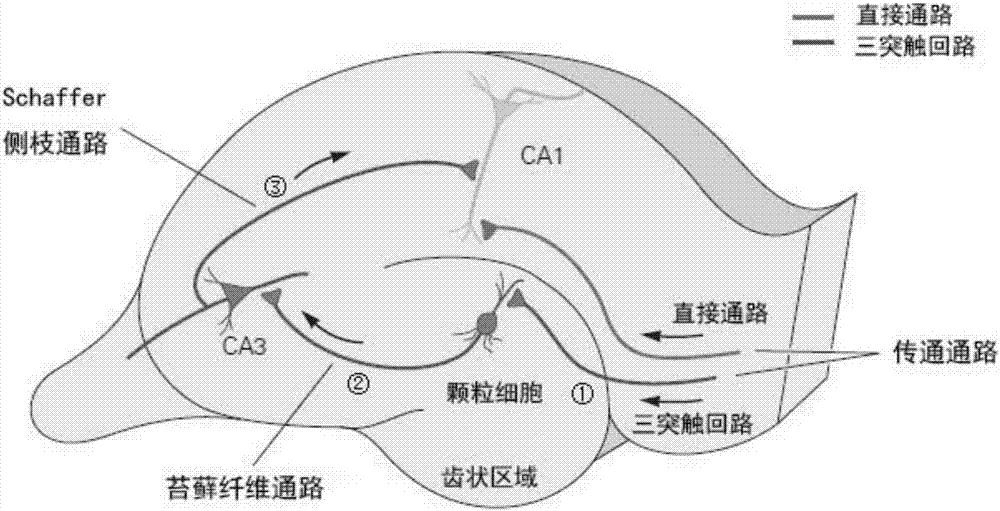Method for detecting learning, memory and cognitive function of rat based on neuronal oscillatory activity
A technology of learning, memory and cognitive function, which is applied in the field of detecting learning, memory and cognitive function of rats based on neural oscillation activity, and can solve the problems that cannot be carried out in animals, and the behavioral test has a very large impact.
- Summary
- Abstract
- Description
- Claims
- Application Information
AI Technical Summary
Problems solved by technology
Method used
Image
Examples
Embodiment 1
[0025] A method for detecting learning, memory and cognitive functions in rats based on neural oscillation activity, see figure 1 , the method includes the following steps:
[0026] 101: first collect the LFPs signal, and then filter and denoise the LFPs signal to extract theta rhythm and gamma rhythm;
[0027] 102: Calculation of the coupling relationship of nerve rhythms, including calculation of nerve rhythms in the same brain region and calculation of nerve rhythms in different brain regions; use the calculated nerve rhythms as characteristic parameters;
[0028] 103: Statistical analysis is performed on the extracted characteristic parameters, so as to realize the exploration of the protective mechanism of learning, memory and cognitive function of rats.
[0029] In summary, the embodiment of the present invention proceeds from the level of mesoscopic electrophysiological information through the above steps 101 to 103, by recording the local field potentials of the CA1 a...
Embodiment 2
[0031] Combined with specific calculation formulas, examples and attached figure 2 The scheme in Example 1 is further introduced, see the following description for details:
[0032] 201: signal collection;
[0033] Rats were anesthetized by intraperitoneal injection of urethane (3.5ml / kg). After confirming that the rat was under anesthesia, it was fixed in a stereotaxic apparatus. An electric blanket was placed under the body of the rat to keep the body temperature of the rat at 37°C. Expose the skull, observe with a microscope, determine the position of the bregma, and preliminarily determine the positions of the CA1 and CA3 brain regions (CA1 brain region: posterior 2.5mm, lateral opening 2.5mm, subcortical 2mm; CA3 brain region: posterior 4.2mm, 3.5mm laterally and 2.5mm below the cortex), above which a small hole with a diameter of 8mm was drilled with a dental drill to expose the cerebral cortex.
[0034] Turn on the electrophysiological recording instrument, and the...
PUM
 Login to View More
Login to View More Abstract
Description
Claims
Application Information
 Login to View More
Login to View More - R&D
- Intellectual Property
- Life Sciences
- Materials
- Tech Scout
- Unparalleled Data Quality
- Higher Quality Content
- 60% Fewer Hallucinations
Browse by: Latest US Patents, China's latest patents, Technical Efficacy Thesaurus, Application Domain, Technology Topic, Popular Technical Reports.
© 2025 PatSnap. All rights reserved.Legal|Privacy policy|Modern Slavery Act Transparency Statement|Sitemap|About US| Contact US: help@patsnap.com



